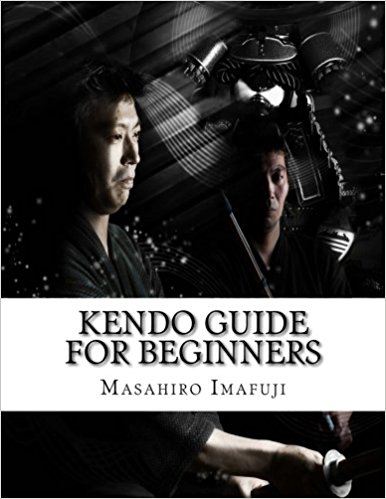You Got It!
Haya Suburi:
Nothing Different from Other Suburi
Haya suburi (I learned it as Choyaku Shomen Uchi) is a rapid suburi (empty cut). Haya means “rapid” or “fast”. Just for your reference, Choyaku means “jumping”. Shomen Uchi means “men strike”.
When people learn this suburi, they have a hard time to comprehend the movement. I have seen many people doing this suburi in wrong ways. Actually haya-suburi is a fast version of a slow men strike. However, one major difference is there. That is
"We do not go back to chudanafter the men strikes".
Every time we strike a men, our hands go back above our head. Some people start haya-suburi from the migi-jodan position (hands above the head). And others start it from chudan. The former is introduced here.
It sounds easy, right? Let's learn haya-suburi then.
Haya-Suburi Learning Procedure
- Take chudan and wait for a command.
- On a command, "Yohi! (ready)", lift your hands above your head.
- On a command, "Hajime! (begin/start)", strike a men stepping onto the right foot.
- Step backwards onto the left foot while lifting your hands above your head.
- Repeat 3 and 4 until you hear "Yame! (stop)".
|
1. Take chudan 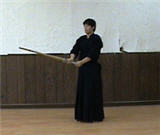 |
2. Yoh-i 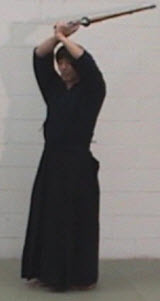 |
|
3. Stepping Forwards 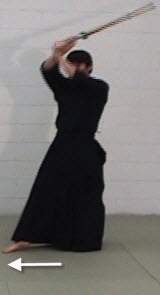 |
4. Men Strike 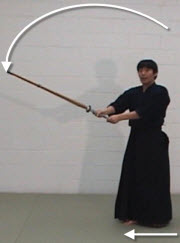 |
|
5. Stepping backwards 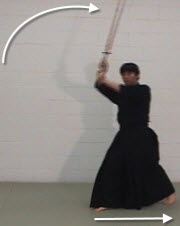 |
6. Hands up again 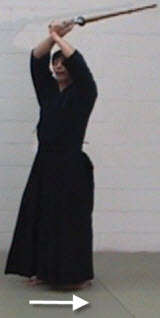 |
- Haya-suburi, "Yohi! (ready)"
- "Hajime! (begin/start)"
- Ichi, Ni, San, Shi...Kyu, Ju
- Repeat the counting
- Shout "Yame! (stop)", when it is appropriate.
After every count, we strike a men shouting the number. So here is how it is done.
Commander: Haya suburi, Hajime! Ichi!
Everyone: Men
Commander: Ni!
Everyone: Men
Commander: San!
Everyone: Men
.
.
.
Commander: Kyu!
Everyone: Men
Commander: Ju!
Everyone: Men
.
.
.
Commander: Yame!
** Things you should keep in mind **
Even though this has to be done rapidly, it does not mean you can ignore the basics. If you cannot do this rapidly you should not try to do it rapidly. That will ruin your basics.
Complete each movement. That is:
- When striking a men, do not leave your left foot behind (snap the left foot up forwards).
- Make sure that you are striking a men not just swinging a stick.
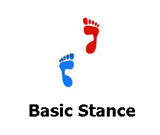
3. When stepping back, do not leave your right foot in the air. (this is very common). That is the right foot and the left foot are in the basic stance position.
It is very important to learn haya-suburi correctly. This movement is very helpful when you learn quick strikes. If you don't learn this properly, you will find it very hard to learn quick strikes.
Remember...
- Do not try to do it fast. “Slowly and correctly”
- Do not hop or jump up. Always think about the basic footwork
- Gradually make it smooth. NOT fast, but smooth.
- This will help you with footwork for your small strikes and continuous strikes. Study this very well.
- Do not forget to strike big.
- Fast does not mean small. Keep it big and smooth.
Kendo Guide for Beginners Available at Your Amazon
A Kendo Instruction Book Written By A Japanese For Non-Japanese Speakers Who Are Enthusiastic to Learn Kendo.
All the instructions of the basics on this site is in this book with
- New and Better Photos (taken for this book!) and
- Newly Edited Contents
- Corresponding Videos
Kindle version is available too. Click here to learn more about the book.

